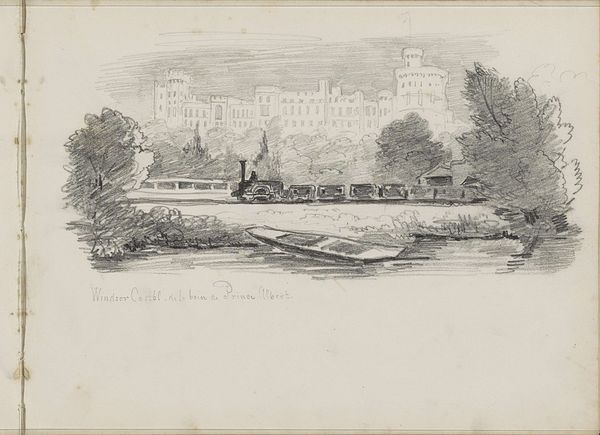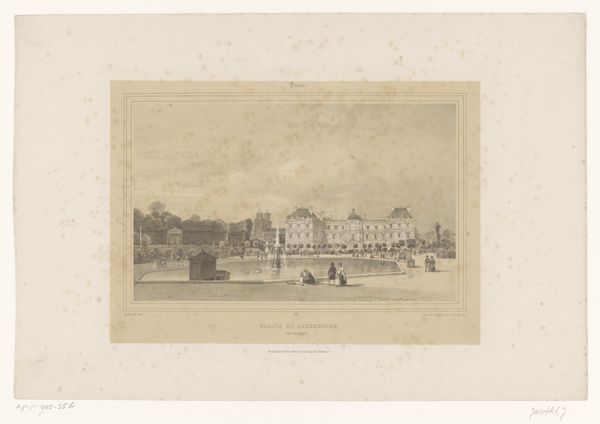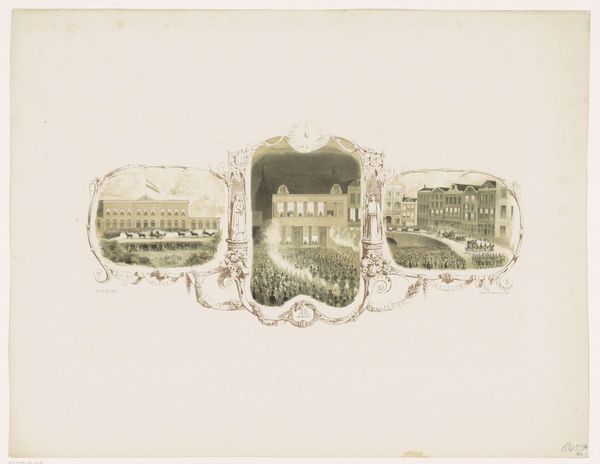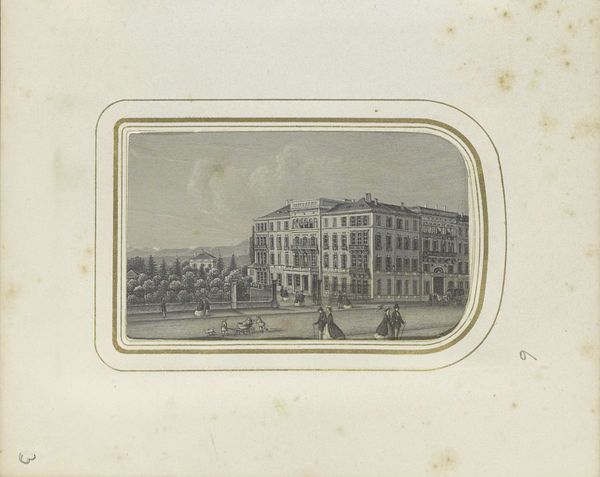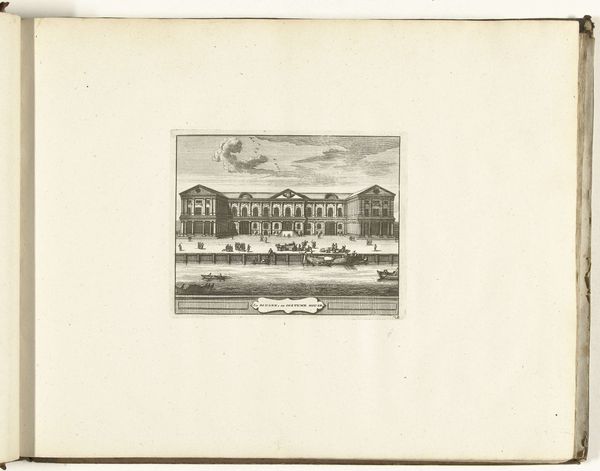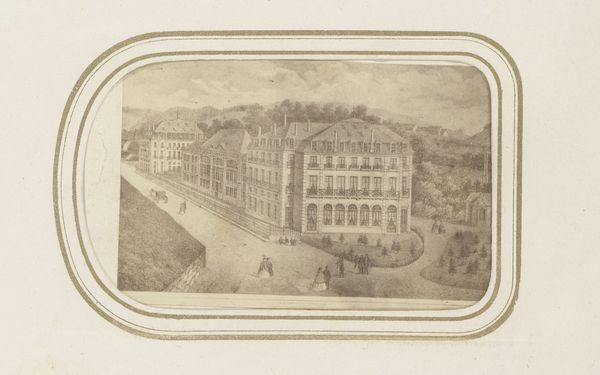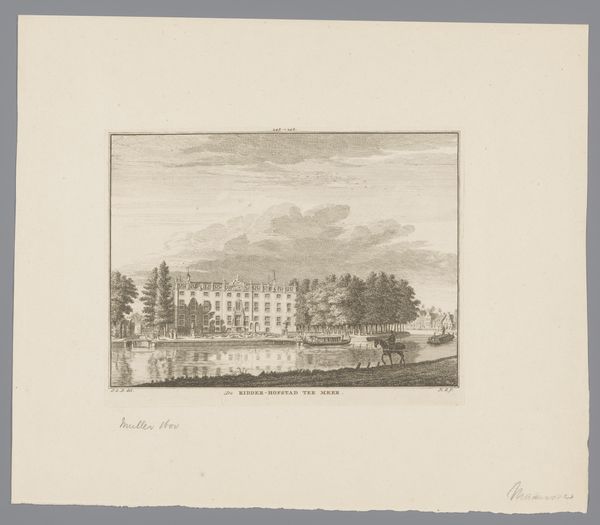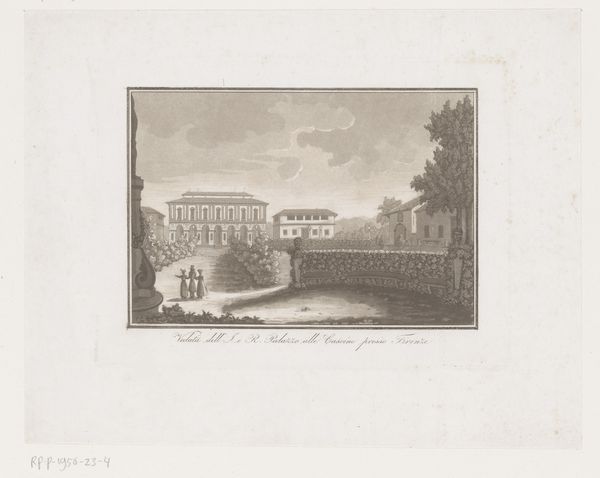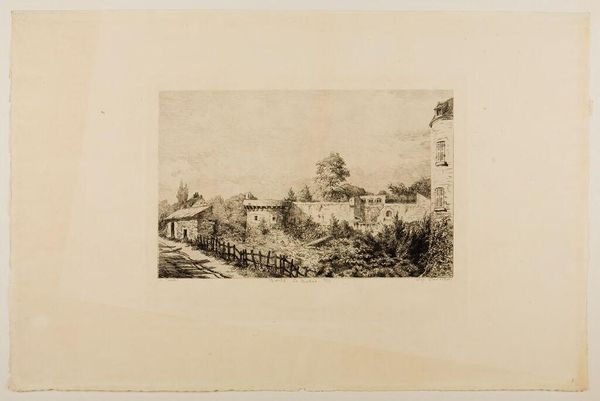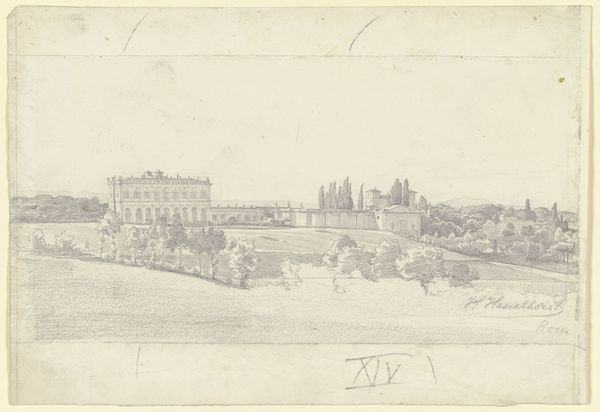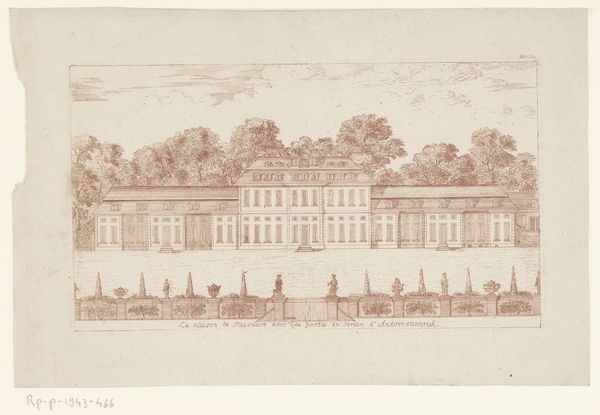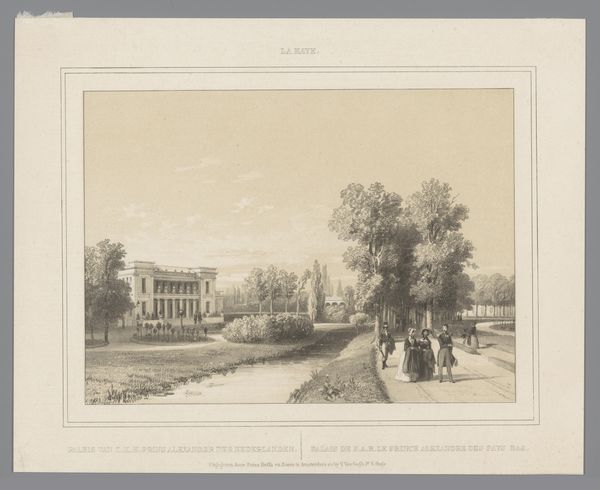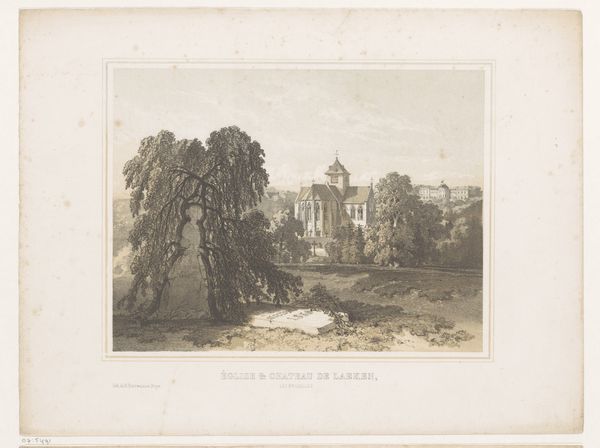
photography
#
garden
#
impressionism
#
landscape
#
photography
#
cityscape
Dimensions: height 108 mm, width 163 mm
Copyright: Rijks Museum: Open Domain
Editor: So, here we have a photograph, "Gezicht op Grand Trianon en een tuin in Versailles," dating from around 1870 to 1900, attributed to Ernest Ladrey. Looking at this sepia-toned image, I'm struck by its formality; the structured garden seems to emphasize control over nature. How do you interpret this work? Curator: That sense of control is precisely what resonates. This image isn't simply a landscape; it's a visual representation of power dynamics in 19th-century France. Consider the Grand Trianon itself, built for Louis XIV as a retreat, a place for private life away from the formal court. But even in retreat, the emphasis is on order, mirroring the absolute power he wielded. Do you see how the garden's layout reinforces a particular worldview? Editor: Absolutely. It's less "nature" and more a designed space, projecting a specific idea. I mean, you don’t just *find* a garden laid out with that much geometry, do you? Curator: Precisely! This photograph then, becomes a document of a specific social and political structure. Photography itself was still a relatively new technology, so capturing these constructed spaces was a way of solidifying and disseminating those power structures to a broader audience. What does the act of photographing this controlled space suggest about the photographer's intent, or the intended audience? Editor: Hmm, so the photo isn’t just *of* a garden; it’s part of a conversation about control and visibility? The photographer might have intended to capture beauty, but the act itself reinforces social norms? Curator: Exactly. It makes you think about how seemingly neutral depictions can still uphold a dominant ideology. What does the symmetry and repetition of architectural details suggest? Editor: It does highlight a sort of imposed order... I guess I was focusing on the garden as a subject, not really considering it as a power symbol. Curator: Seeing the garden as an expression of control encourages a deeper critical analysis, allowing us to ask whose perspectives are privileged. Now, how would this compare to images from other groups at that time? Editor: Definitely gives me a lot to think about. I'll never look at gardens the same way again.
Comments
No comments
Be the first to comment and join the conversation on the ultimate creative platform.

